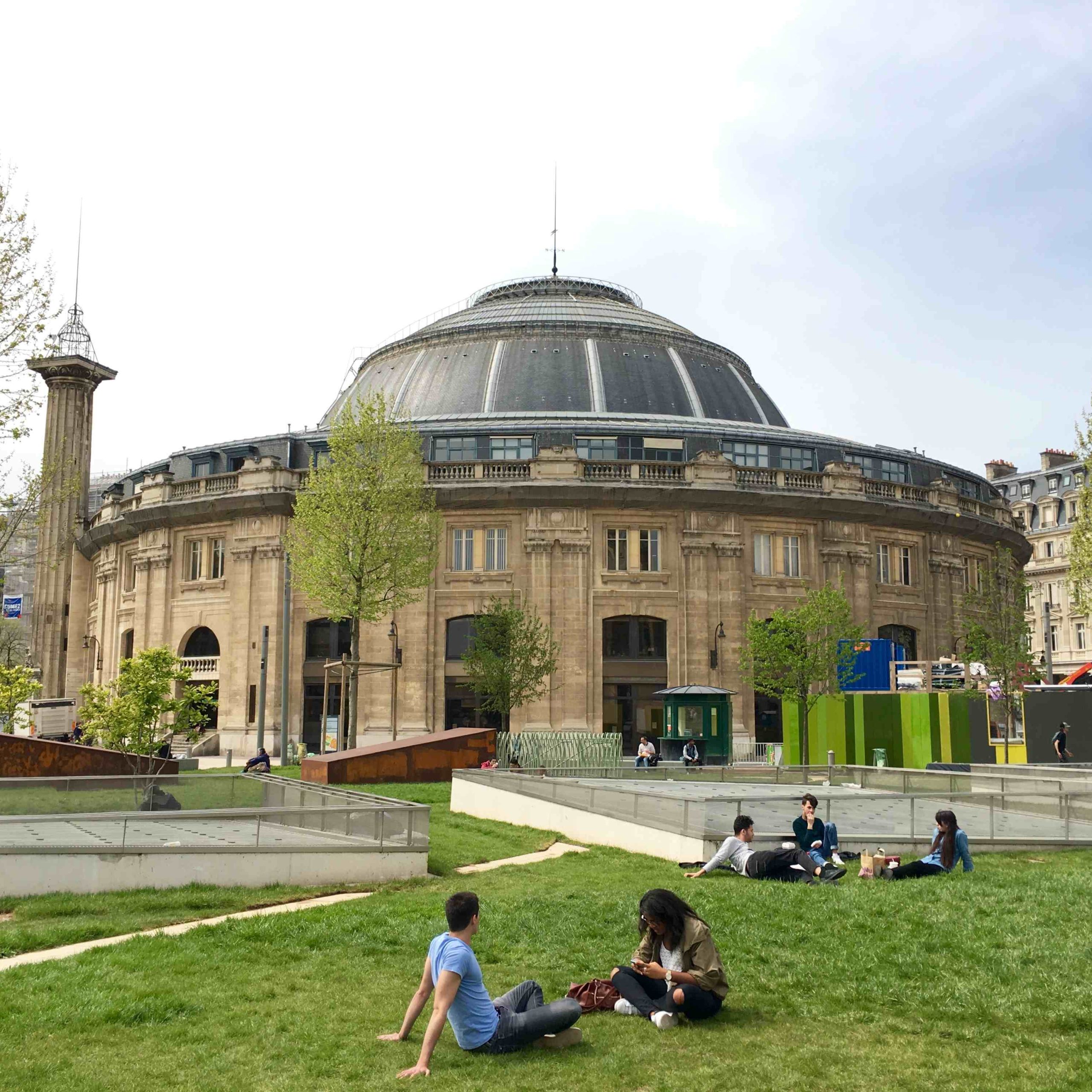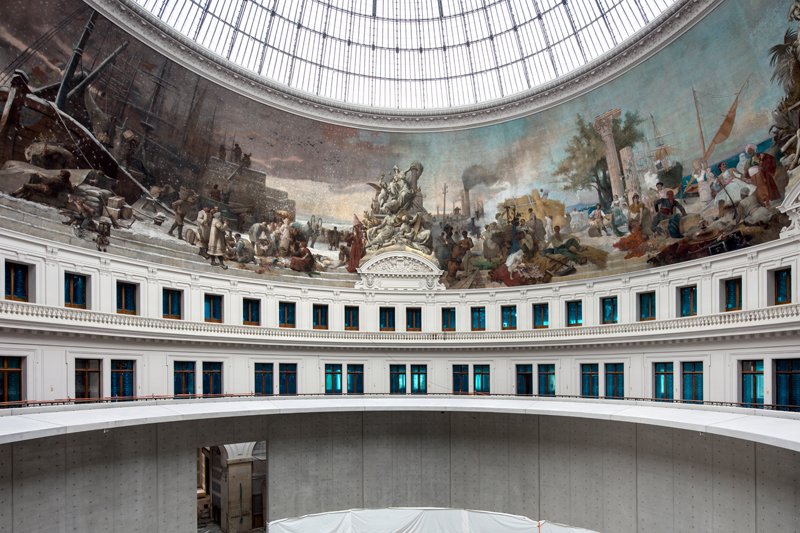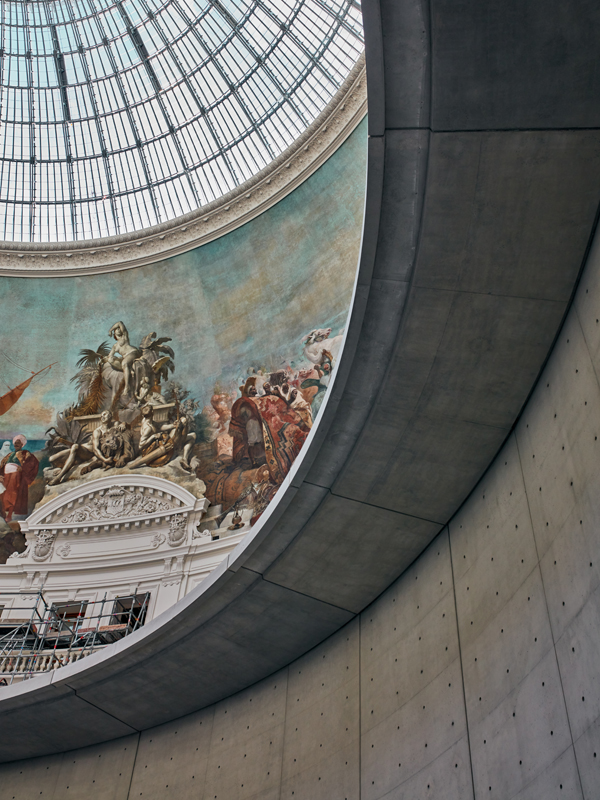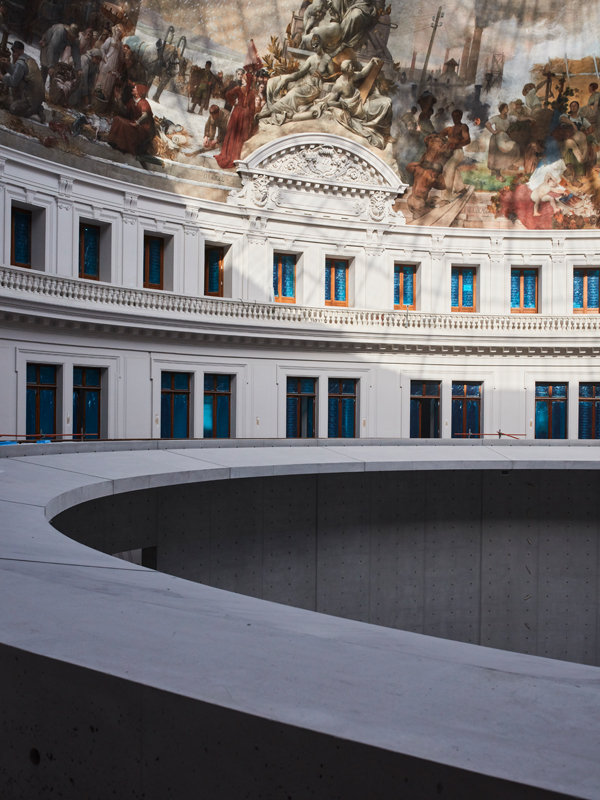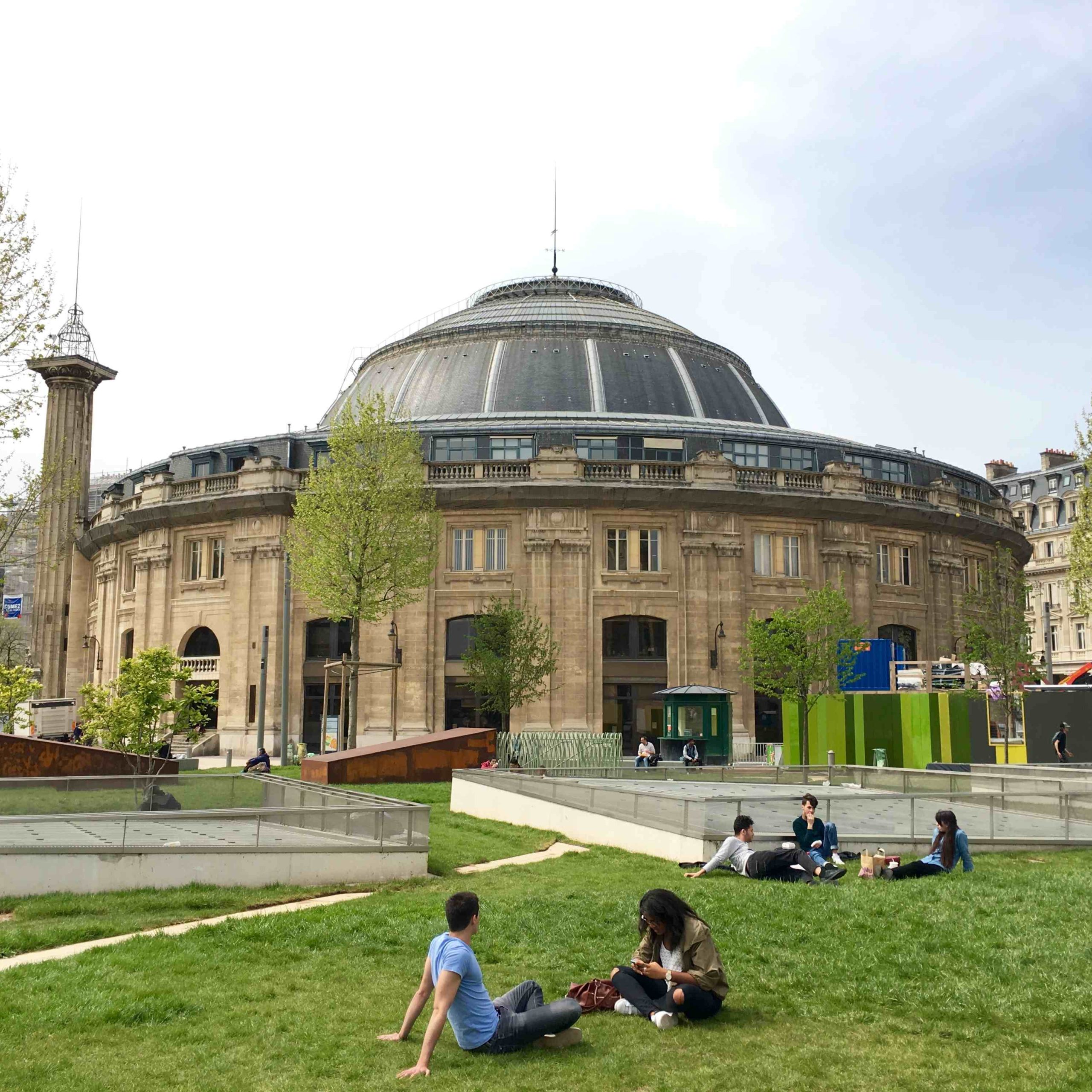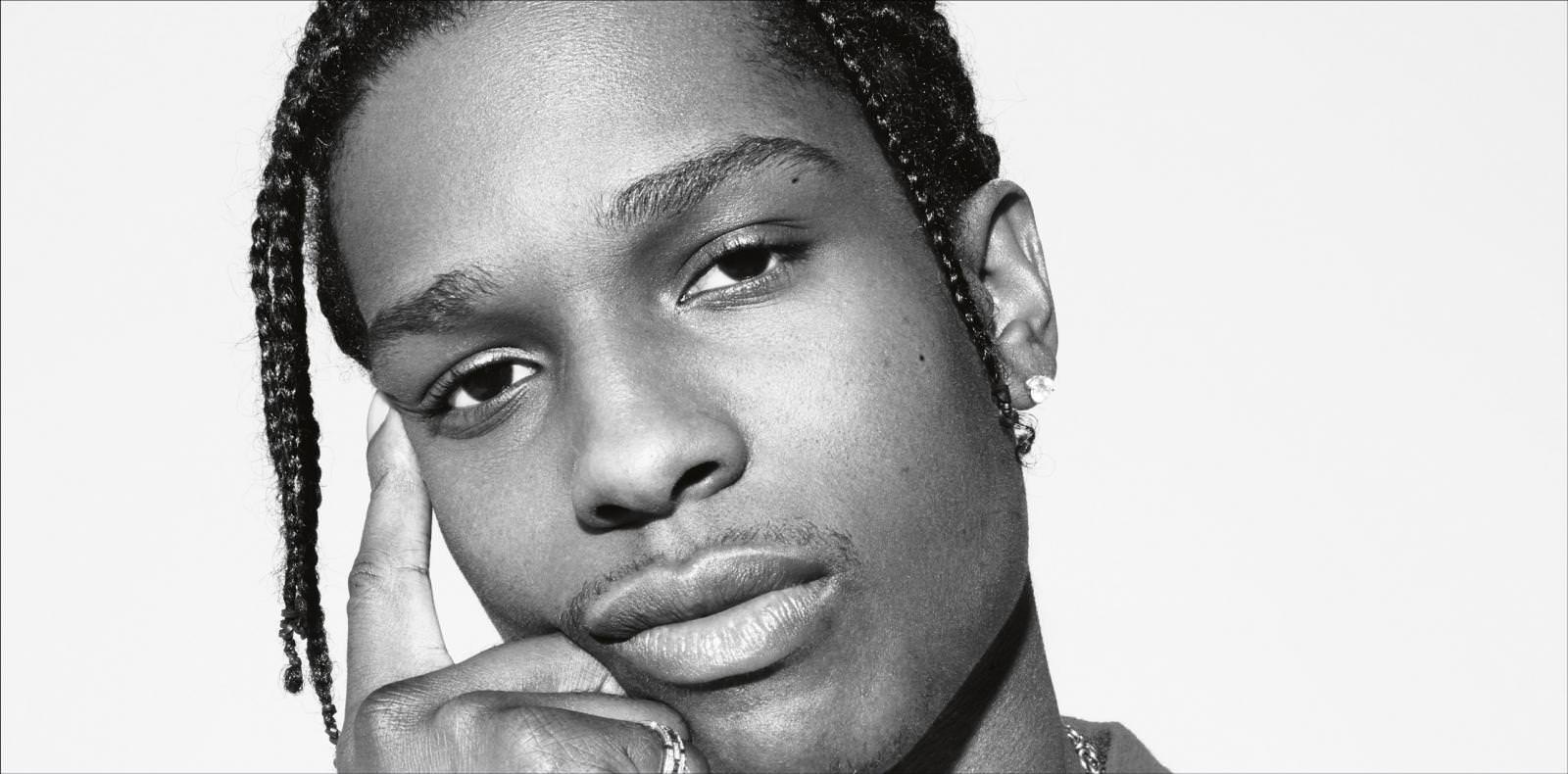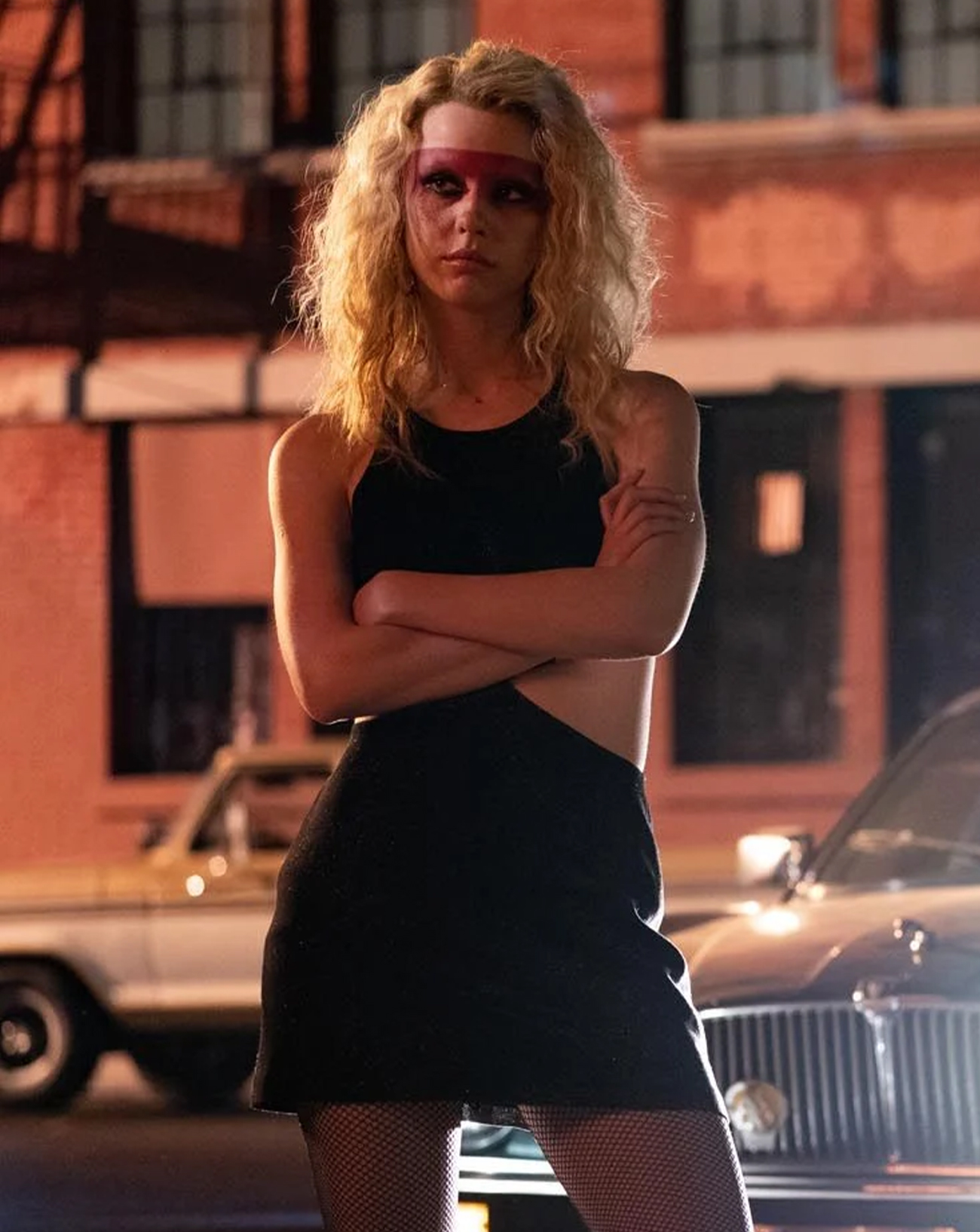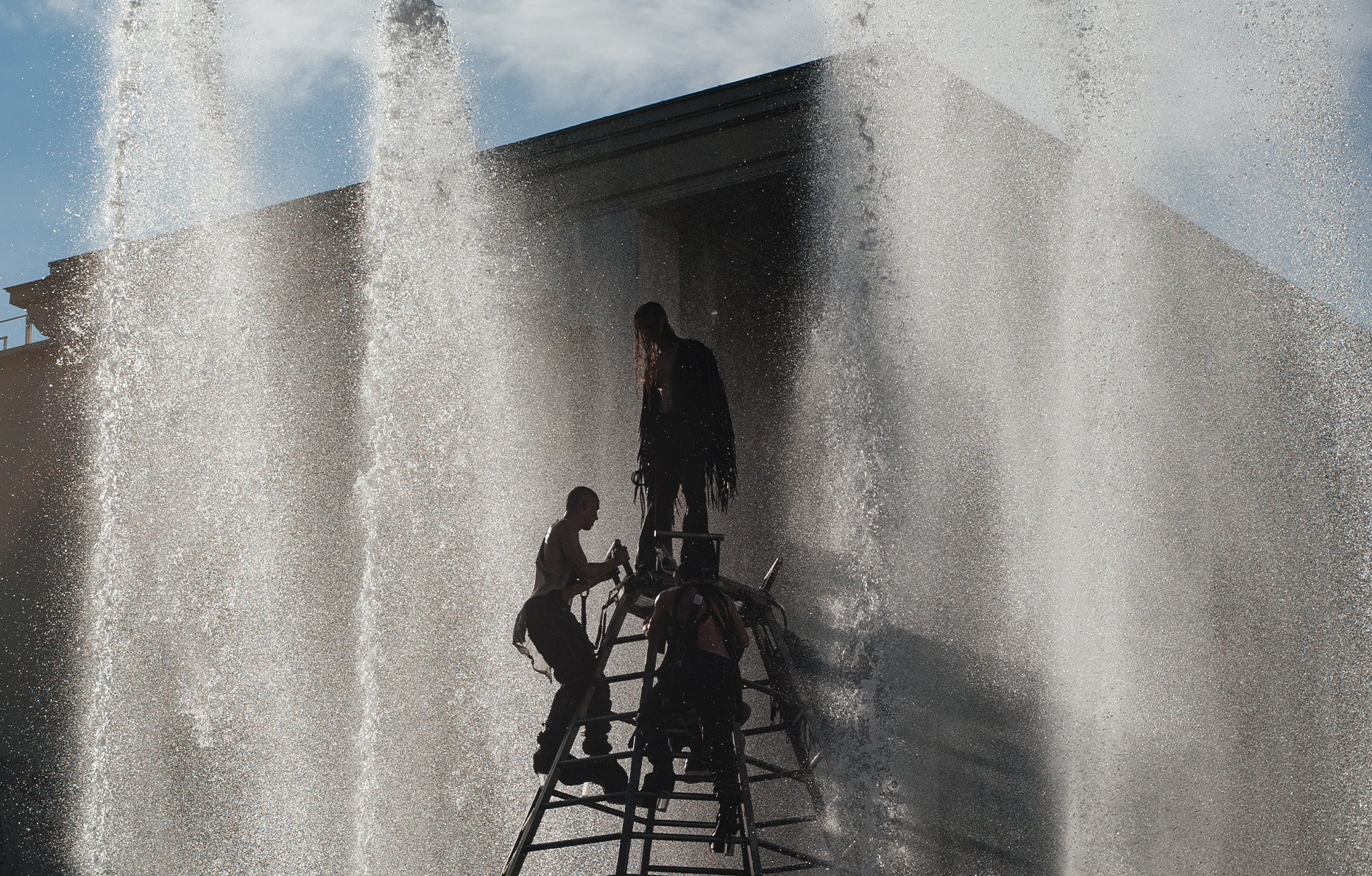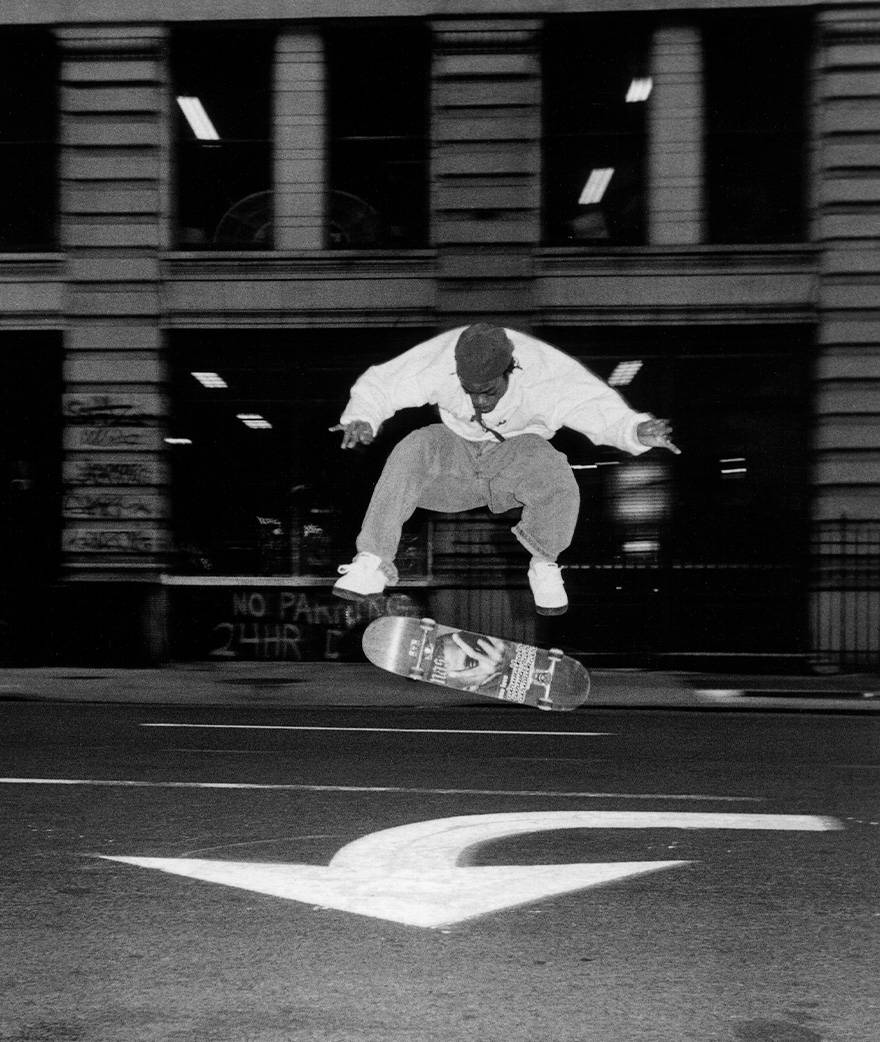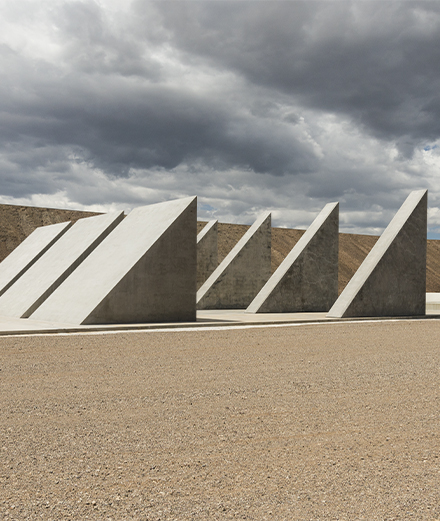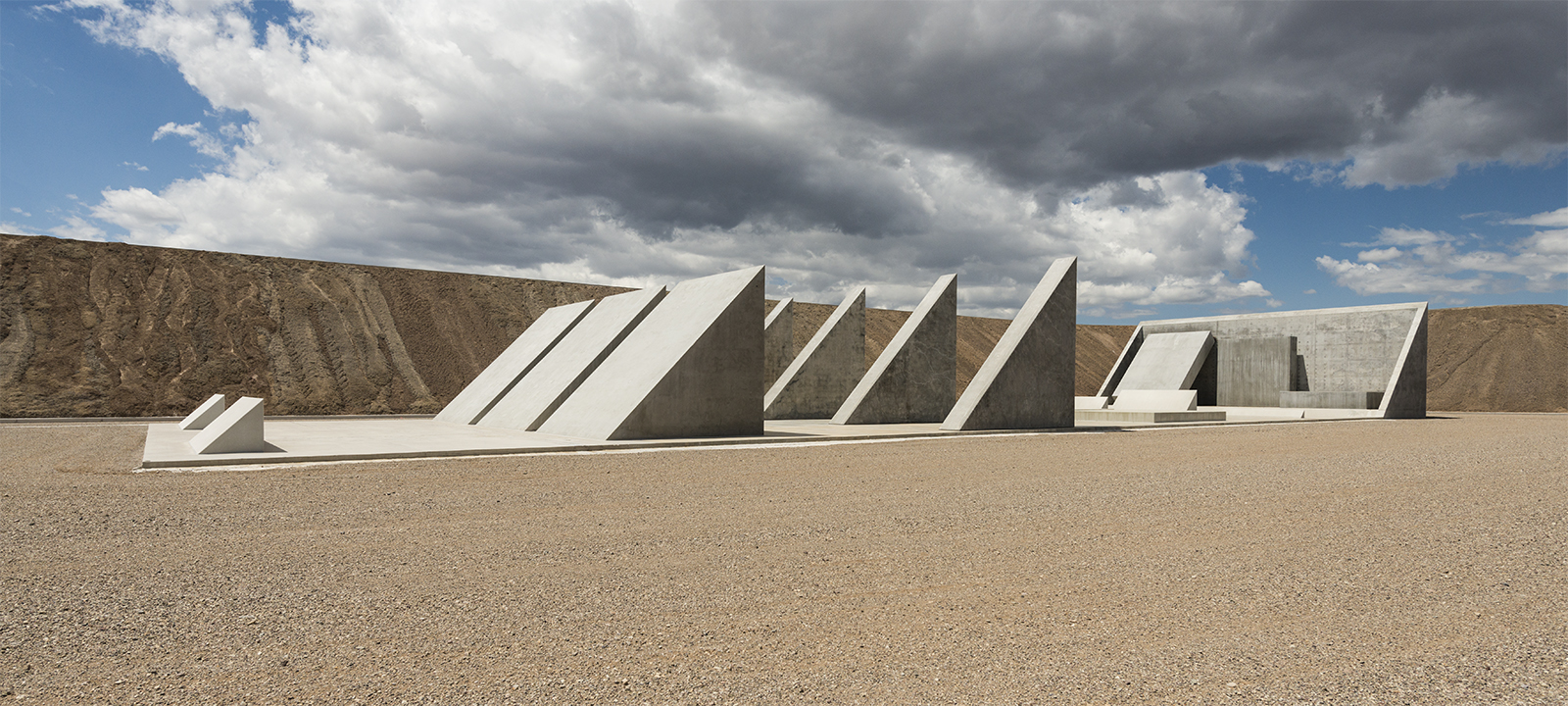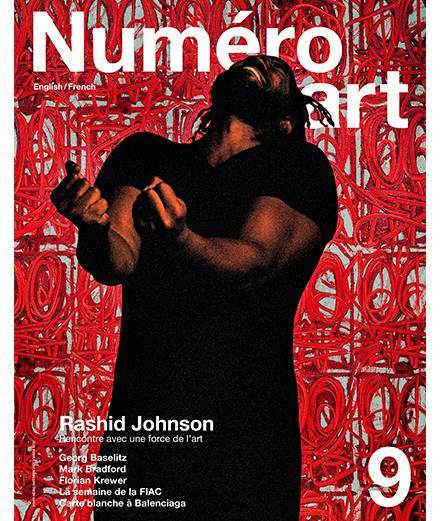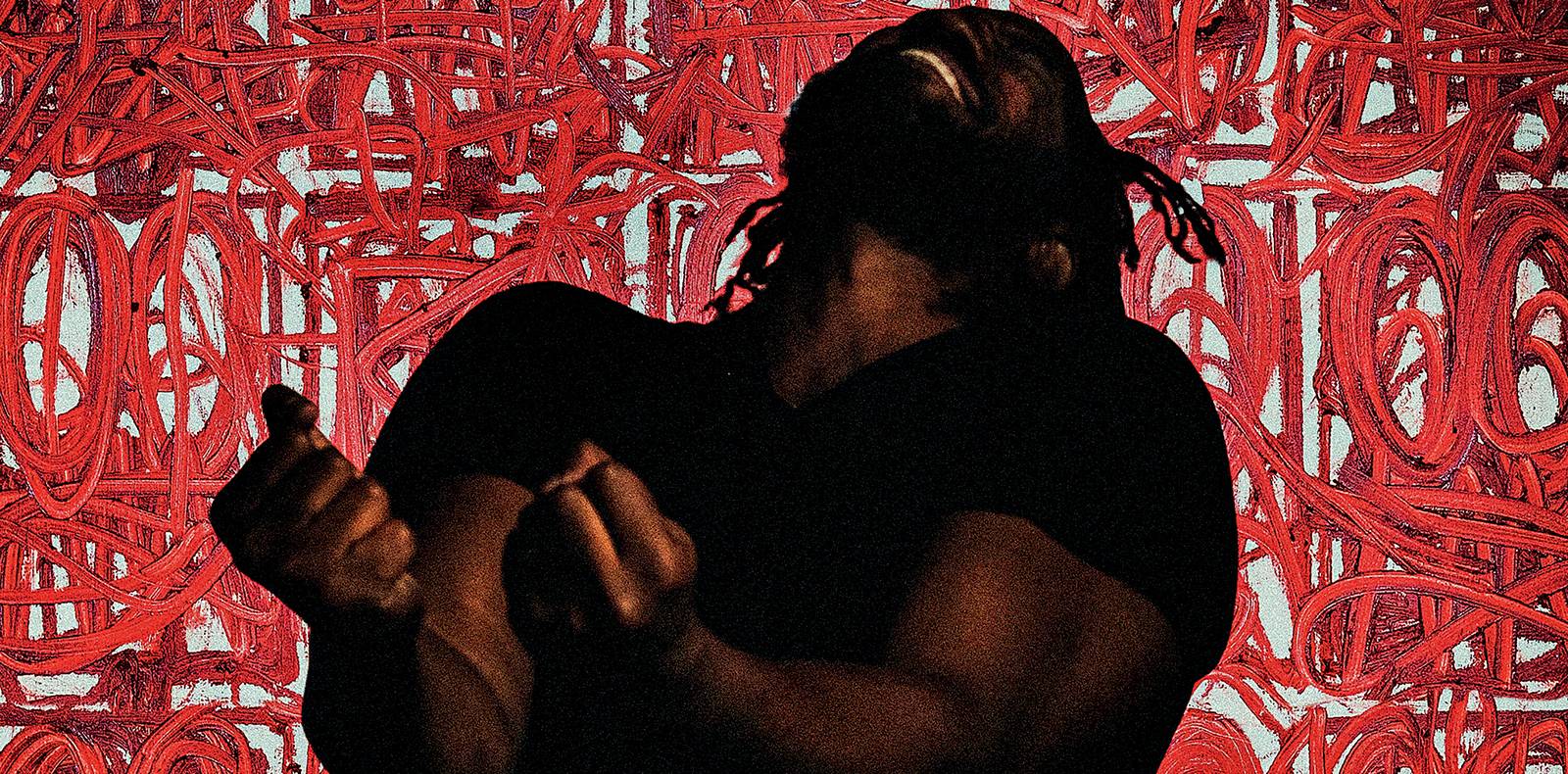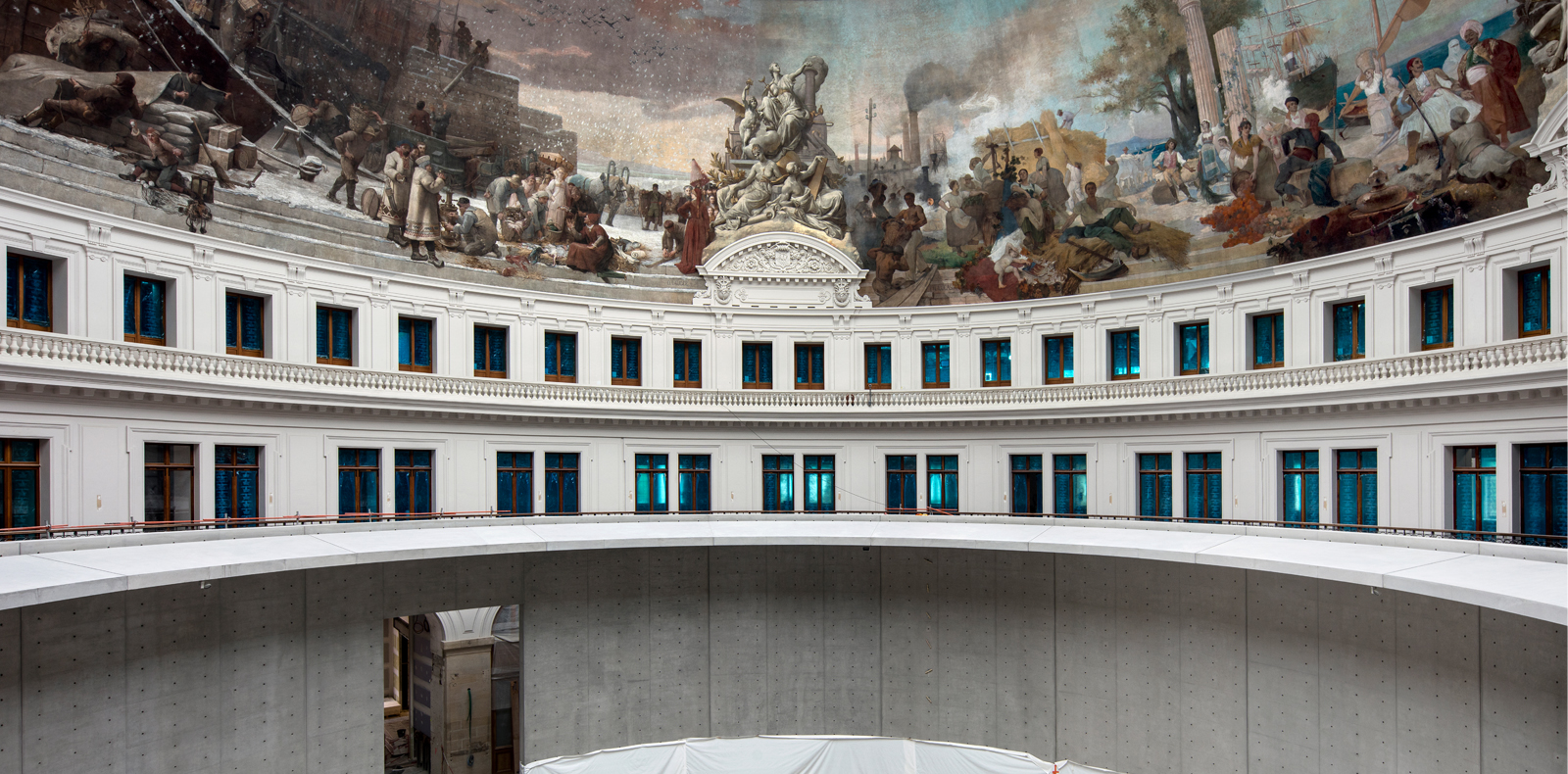
29

29
The Bourse de Commerce: a guided tour of the new Pinault Collection
Numéro art took a preview visit to François Pinault’s new Parisian museum, which will officially open its doors in June 2020 in the Les Halles neighbourhood. This spectacular feat aligns the magnificent renovation of an impressive heritage building with a radical realisation by the architect Tadao Ando.
Paris’s new temple of art will be round, as appetising as a giant wedding cake celebrating the architectural memory of the city. The Bourse de Commerce – the cake in question – will open its doors in June 2020 after four years of renovation work. The public will rediscover one of the jewels in Paris’s architectural crown, built in the heart of Les Halles on a circular plane and surmounted by a monumental dome. Like a Renaissance mille-feuille with one remaining Medici column, the building was a hotel, then the corn exchange until 1889 when it became the commodities exchange. “The space will be dedicated solely to contemporary art,” explains its managing director Martin Bethenod. ”Exhibitions of contemporary art from the Pinault collection as well as projects commissioned especially for the space by important artists in the collection.”
Like a Renaissance mille-feuille with one remaining Medici column, the building was a hotel, then the corn exchange until 1889 when it became the commodities exchange.
François Pinault’s two Venetian museums, opened in 2005 and 2008, after abandoning his French project on the Ile Seguin, offer a taster of what we can expect on the program: the harsh conceptual painting of Flemish artist Luc Tuymans, the political works of Danh Vo that interweave history at large and his own personal story, a passion for photography (from Cindy Sherman to Berenice Abbott), the star of the market Albert Oehlen and the alchemist painter Sigmar Polke. “We focus on art from the 1970s to now. The line-up will be cutting edge and we won’t be doing blockbusters,” continues Martin Bethenod.
“We focus on art from the 1970s to now. The line-up will be cutting edge and we won’t be doing blockbusters”, continues Martin Bethenod.
And yet in Venice, the Collection did show the master Irving Penn in 2014 and in 2017 it held a mega show of works by Damien Hirst… Be that as it may, the Bourse de Commerce won’t be entering the race of one-upmanship with its two immediate competitors: the Pompidou Center, which gambles more and more on big names from the pre-1970s (lack of budget, they have to sell tickets) and the Louis Vuitton Foundation, which, with its means that no state-owned French museum could ever dream of, can effortlessly exhibit the world’s most beautiful modern collections (Chtchoukine, Courtauld) and contemporary superstars such as Takashi Murakami and Jean-Michel Basquiat.

The names of the artists who will be taking over the seven galleries at the Bourse in June have not yet been announced, but we know Pinault has a passion for Thomas Houseago (set to show at his Venetian museum in 2020), Charles Ray and the French artists Philippe Parreno and Pierre Huyghe. However the end of November visit to the site offered an almost complete overview of the work perfect in every respect by the Japanese architect Tadao Ando. His gesture, of a simplicity and a formidable efficiency, resembles a nothing that does everything: the construction of a concrete cylinder nine meters high and thirty meters in diameter within the gigantic central rotunda.
A peaceful haven with exceptional zenith lighting looks directly over the dome and thus offers a veritably cosmic view of the sky.
This roundness within the roundness forms the most impressive space at the new Bourse, an atrium sheltered by the 19th century architecture of the building, a peaceful haven with exceptional zenith lighting looking directly over the dome and thus offering a veritably cosmic view of the sky. Between sky and earth, between earthly existence embodied by materiality (the ground is made of concrete) and spiritual aspiration, we can feel the trademark of Tadao Ando, whose masterpieces of abstraction and introspection illuminate the island of Naoshima. The nine meters of height create a scale that suits the works to be displayed here. “The example of the Grand Palais,” explains Martin Bethenod, “has shown us that with a dome 30 meters high, even the most monumental works of Richard Serra will appear to be small. The cylinder here creates a more intimate scale for the oeuvres. But there’s no injunction to monumentality at the Bourse. We have imagined spaces that revolve around the rotunda in very different formats: a 120 m2 space that lends itself to hosting photography and works on paper, spaces of up to 650 m2 with a height of 4 meters, and others that are more monumental and reach up to 8 meters in height.”
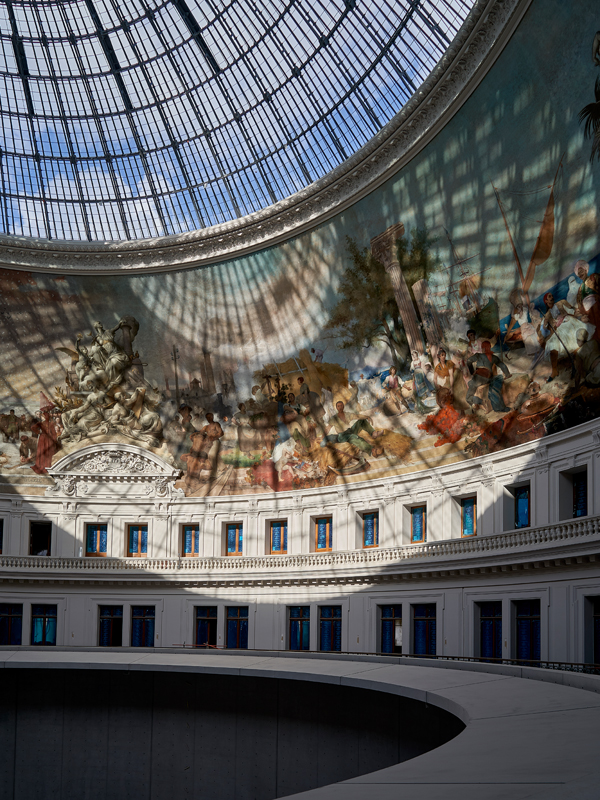
The 300 windows of the Bourse (looking either out on the exterior or the interior of the rotunda) also work with the dialogue between the exhibition spaces and the natural and urban environment, offering sublime views over the Saint-Eustache church and the Canopy of Les Halles shopping mall (which seen from a distance isn’t quite so bad). Indeed, it was one of the major challenges of this museum to find a way to exhibit works in curved galleries with lots of openings. “We completely assume the fact we are not adhering to the standardised canon of a white cube,” Martin Bethenod says, “These days all museums look the same, you don’t know if you’re in a gallery in New York or a museum in Stockholm. Just like the Punta della Dogana and the Pallazo Grassi in Venice, already reimagined by Ando, that look over the Giudecca or the canal, here you can also stretch the eye. When we show a work of art, we always show it in relationship to a space, a context. And if needs be, partitions can be installed in front of the windows or perpendicularly to the curves. But the gentle curves are marvellous in terms of scenography: they create a dynamic and a mystery by not immediately revealing the far ends of the gallery. Just think of other extraordinary curved venues like the Hirshhorn Museum in Washington or the Guggenheim in New York…”
“We completely assume the fact we are not adhering to the standardised canon of a white cube,” Martin Bethenod says, “These days all museums look the same.”
This game of circularity is further reinforced by Tadao Ando. The architect has installed a walkway at the top of the cylinder to access the various exhibition spaces on other floors. It thus becomes a non-linear narrative in a non-authoritarian museum: loops communicating with one another and that accompany the visitor’s liberated ambulation. Everything becomes a gentle flow of energy, light and emotions. The infinite loop is like the central motif, abstract and metaphysical, of a space that never stops creating comings and goings between the upper and lower levels, the centre and periphery, the exterior and interior (of the visitor himself), the past and the present: the 21st century walkway offers a panoramic vision over the immense painting deployed over 360°, 10-meters high and 400m in circumference, beneath the dome – the first masterpiece at the Bourse de Commerce. This painting, completed in 1889, was orchestrated by the architect Henri Blondel who commissioned five painters to paint large murals symbolising the history of trade between the five continents: the four cardinal points by Alexis-Joseph Mazerolle, Russia and the North by Désiré-François Laugée, America by Évariste-Vital Luminais, Asia and Africa by Victor Georges Clarin, and Europe by Hippolyte Lucas. While the motifs, such as the lion for Africa might seem caricatural today, they justly testify to the ambiguities of another era.
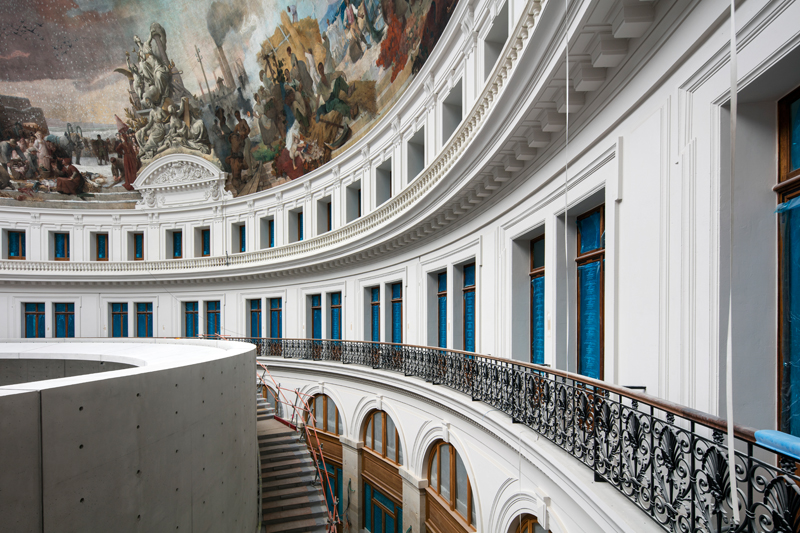
Everything becomes a gentle flow of energy, light and emotions. The infinite loop is like the central motif, abstract and metaphysical, of a space.
The renovation of this masterpiece and indeed the entire Bourse (which hadn’t been touched since 1889) has been a major project since 2016 involving Tadao Ando, the French architects Lucie Niney and Thibault Marca as well as the architect of Historic monuments Pierre-Antoine Gatier. For six months, 1400 m2 of canvases have been restored in situ by some twenty restorers. The metallic architecture has been preserved. The contemporary structures and the modern white rooms are in reality just a second skin that’s been slipped over the preserved 19th century architecture. At the end of November, the final floor devoted to Michel and Sébastien’s Bras’ La Halle aux Grains restaurant (open 7 days a week with its glass roof and view over the whole of Paris) and the basement (which will be home to a 288-seat auditorium and a room dedicated to performance, video and other experimental works) couldn’t be visited. But we suspect they’re not the only secrets that will be revealed in June 2020.
The Bourse de commerce – Collection Pinault will open its doors in June 2020.
